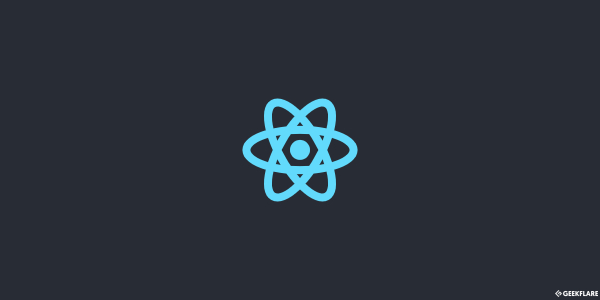We humans will confuse with a lot of things. The confusion may arise based on different characteristics of things. The most common way to get confused with different things is their names.
People will first get to know the names of a new thing. Either it’s another person, animal, product, software, etc.., They will search with their names and then they will come to know about different features, applications, history, etc..,
Why is this all about?
Yeah, people often get confused with the terms (names) React and React Native. If non-tech guys see the names React and React Native, they will assume Reactive Native as an extension of React in most cases. Even some tech guys may think in the same way if they have 0% knowledge in these areas.
What are those things actually? Why people often get confused with them, not others?
React and React Native are two frameworks. The names look similar with an extra word between them. So, people often confuse because of their names at first glance. If you have the same confusion, then you are at the right place to unwrap the mystery behind them.
Let’s find out.
React

React is a JavaScript library used to build single-page web applications. It’s one of the most popular libraries to build user interfaces (frontend) for the web. Maybe we can say it’s the most popular library for now. It’s created and maintained by Facebook. It’s also known as ReactJS.
As I have experience with React, I can say it’s beautiful and straightforward to learn and build. It’s a library. So, we can build whatever we want and however we want by utilizing its features. There are no strict rules to be followed while developing applications with React. So, we will have freedom.
React has so many cool features. Let’s look at them.
#1. Components
In React, everything is a component. It’s like a building block of the web application. We can form large components by combining the small components. Every component has its own state and control. Components control the user interface and decide what to show to the users based on its state.
Components are everything in React. And they are reusable. Write once and use it everywhere.
We need to write components with utmost care. It makes things easy to maintain when our application grows. If we write lots of code in a single component, it will become a burden for us to maintain eventually. React components should be small and sweet. They make developers’ life heaven as well as hell.
#2. Virtual DOM
You should have seen something like a loader inside a button. And in social media platforms, the likes count increases as soon as you press it. In the earlier days of the web, we have to reload everything to get the information. But, now a single which needs to be updated will refresh for us without touching other things. What’s this all about?
As we see before, everything in React is a component. Browsers maintain the DOM structure for the elements for a web application. When a part of the web application needs to update, we have to update it using the DOM manipulations. React does the same thing efficiently.
React creates a virtual DOM (copy of DOM) for all its components. To update something in a web application, React compares the real DOM with the virtual DOM. If there are any changes, then React triggers updating the component.
#3. One Way Data Flow
We can’t divide the large set of components into smaller components without data flow. There has to be some way for the flow of the data between the components.
React allows us to pass the data from one component to another component in a single direction. The data flows from the parent components to the child components. And child components can’t update the data. There’s no way to send back the data to the parent component as the data flow is unidirectional.
You may first think it doesn’t multi-directional data flow. But, a single-direction data flow gives us more control over the multi-direction data flow.
Overview
There are many other features like JSX, Conditional Rendering, etc..; they are secondary. We have seen the primary features of React library. When it comes to the applications of React, we can build almost any type of web application with it. The community of React is huge. You can find a lot of packages to work with React.
React Native

React Native is a JavaScript framework used to develop cross-platform mobile applications. It’s also created and maintained by Facebook.
Most of you will be astonished by the above statement.
Can we create mobile applications for Android and IOS with a single framework?
If you are not following the updates in the tech world, then there is no chance you will know it. Yeah, we can create cross-platform (both Android and IOS) applications using React Native. And there exist other frameworks for cross-platform application development.
React Native is one of the most popular ones of its kind. Not the most popular one because of JavaScript limitations in native applications. But, it shines in its areas of development. Even large companies like Facebook, Instagram, Flipkart, etc.., use it. It doesn’t mean you should use it. It means that we can build cross-platform production-level applications with React Native.
I have used a group of words called Native Applications in the above paragraph. What are they? It’s not some new type of application. A native application is specifically created for a specific platform. Android apps for android mobiles, IOS apps for iPhone mobiles, Windows applications for Windows, etc..,
What’s the matter with Native in React Native? Coming to it, React Native creates a native application that suits both Android and IOS based on our wish. The applications developed with React Native are native as same as Android Studio for android and similarly for the IOS.
Maybe the creators named it React Native because of it. Not a fact.
When it comes to the features of React Native, there are a bunch of them waiting for us. Let’s see some of the primary features from them.
#1. Cross-Platform
We can create mobile applications for both Android and IOS at the same time with a single code-base. It saves a lot of time and money for the companies.
#2. Hot or Live Reload
If you have experience in React or React Native applications, then you probably know about it. This features reloads the whole application with new updates when we change the code. We don’t have to press the reload button every time we change the code. Update the code and see the changes. That’s it. We don’t have to wait for anything unless there is a bug.
It may seem like a secondary feature for you. But, if you are coming from android development without any framework, you will understand the value of this feature in React Native.
#3. UI Libraries and Community
There are many built-in native components in React Native. We can use them directly without any additional setup or installation. The native components look native in respective platforms. The React Native applications UI matches with IOS native UI as well as Android native UI. React Native has components similar to React.
And when it comes to community. It’s large and keeps on increasing. You can get help without any difficulty from the community when you are stuck in it.
Overview
You can find lots of other features of React Native on the internet. Explore them as well if you are going into mobile app development. A frontend developer can also develop native applications using React Native. It makes the development of cross-platform mobile applications easy.
React Vs. React Native
There are some similarities and differences between React and React Native. Let’s look at them.
When it comes to applications of React and React Native, they are totally different from one another. But, when it comes to the principles, they look similar. Both React and React Native has components. And they follow the same principles in the respective development.
Both of them use the JavaScript language for development. Let’s see a simple Hello, World app in both of them.
React
import React, { Component } from 'react';
import './App.css';
class App extends Component {
render() {
return (
Hello, Wolrd!
);
}
}
export default App;React Native
import React from 'react';
import { Text, View } from 'react-native';
const App = () => {
return (
Hello, world!
)
}
export default App;As you can see, both of them use React package. The syntax looks similar in both apps as they use a special markup called JSX. But when it comes to the rendering part, they both use different things. React uses Virtual DOM, and React Native uses Native API for UI rendering.
There are some external packages like Redux, MobX, etc.., for the statement management of React applications. The same packages can be used in the React Native applications as well.
Both React and React Native uses JavaScript. So, we can use almost every JavaScript package with both of them. This adds lots of packages to both of their package libraries.
React and React Native are related to one another. But, they are used for different purposes.
Conclusion
React and React Native is different in terms of the end product and application platforms. But, they follow similar principles in the development of the respective application. If you can learn one of the two frameworks, React or React Native, you can speed up learning another. However, React knowledge is required for the development of React Native applications. But, it’s not enough for it. We need to know more about the development of native applications as support is limited in React Native.
Let’s hope it will eventually evolve for full support in the future.
If you are looking to get started with web or mobile applications development, then selecting React or React Native will definitely benefit you in the future. But it’s not mandatory, though.
Learning the concepts of React is a cakewalk if you know JavaScript. The official docs will be a great resource for you to get started with React or React Native.
Happy Knowing 🙂



